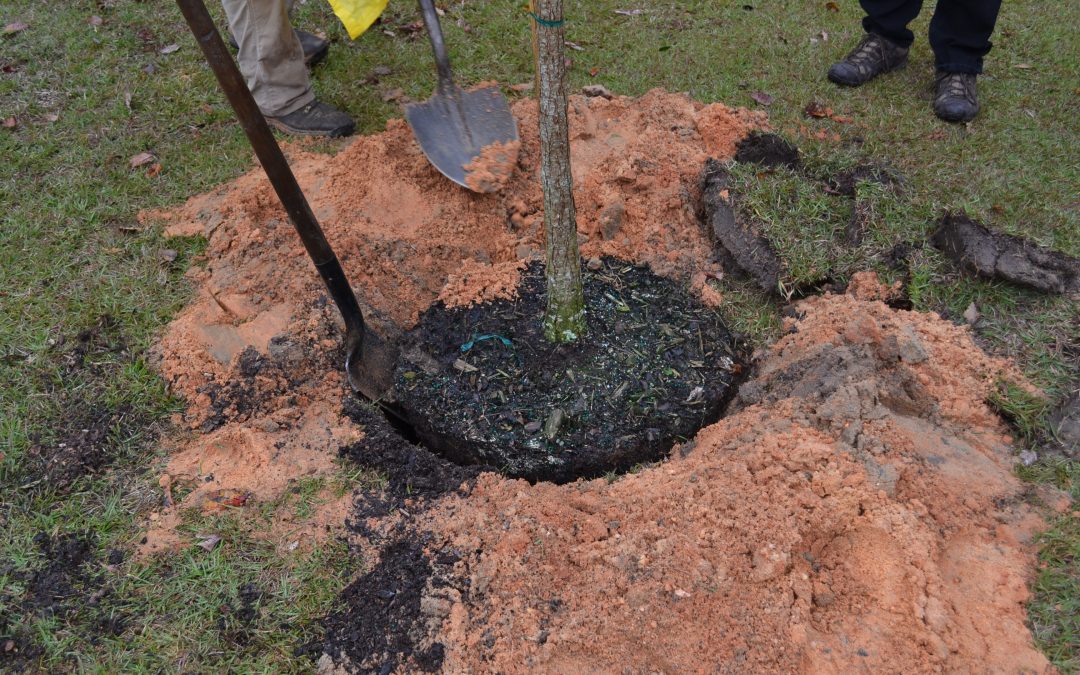
Video: Tree Planting Basics
Our winter season is a good time to install many trees and shrubs. Here is a basic review of a few planting practices to make sure that your new plants get off to the good start.

Our winter season is a good time to install many trees and shrubs. Here is a basic review of a few planting practices to make sure that your new plants get off to the good start.
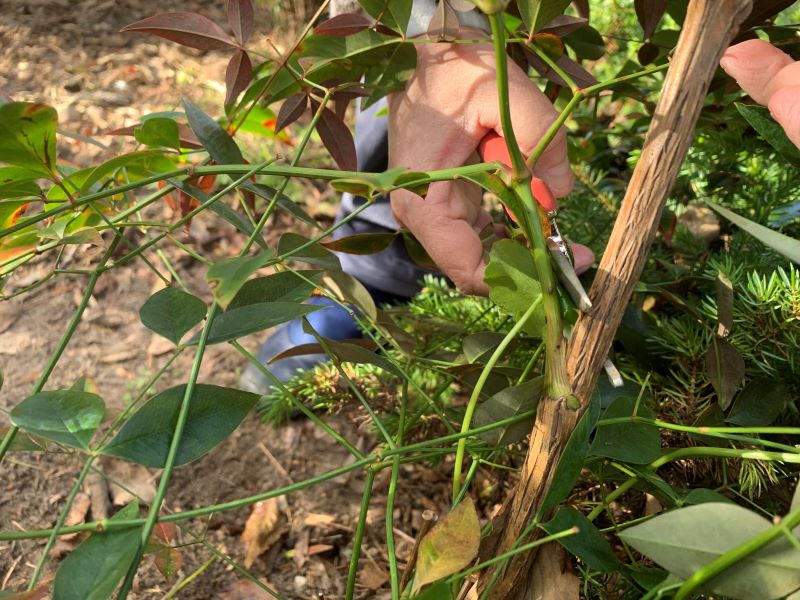
Many shrubs can benefit from a little pruning. Choosing what to prune to maintain a plant’s natural look can sometimes be a challenge. Get a few tips on pruning shrubs with cane type growth from UF IFAS Extension Escambia County.
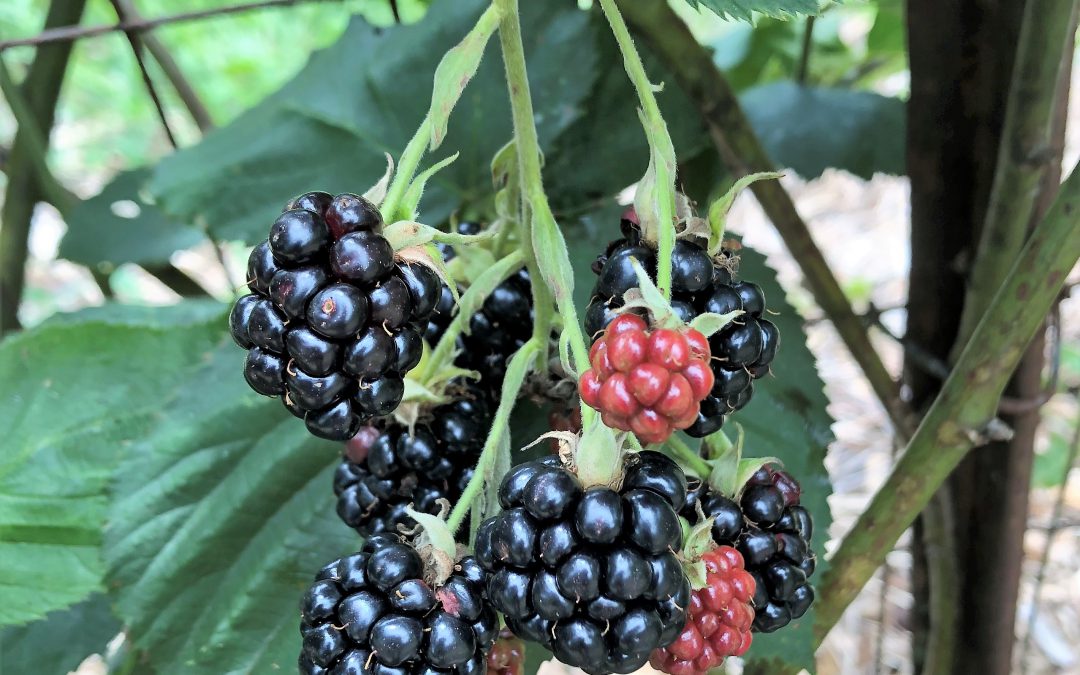
Chitosan is used as an edible coating material to extend the shelf life of perishable commodities. It is a natural polysaccharide derived from chitin, a main component found in the exoskeleton of crustacean such as crabs, shrimps and insects. Chitosan is nontoxic, biocompatible, biodegradable and has antimicrobial activity that works against a wide range of bacteria and fungi. The incorporation of chitosan into the packaging material or direct application on the food surface helps to inhibit the spoilage caused by microorganisms. Moreover, chitosan has good moisture barrier properties as moisture accelerates the deterioration of many food products, leading to microbial growth, enzymatic reactions, and other forms of spoilage. Chitosan-based coatings or films act as a protective barrier against moisture, helping to maintain the quality of the food and prolong its shelf life. Chitosan can be applied as an edible coating directly onto the surface of fruit, vegetables, and other perishable products. This coating provides a protective layer, retarding moisture loss, reducing microbial contamination, and maintaining product quality for a longer period. Previously, chitosan applications were noticed to be efficient in reducing postharvest decay in strawberries, avocado, papaya, mango, and blueberry.
Blackberry (Rubs spp) belongs to the family Rosaceae and is known as super food due to its high nutritional value containing vitamin C, antioxidants, and phenolic compounds. Blackberry is a deciduous crop that grows best in temperate climates. Several blackberry species are native to Florida, and varieties that performed well in North and North Central Florida include Osage, Chickasaw, Apache, Arapaho, Choctaw, Ouachita, and Kiowa. Recently significant planting of different blackberry varieties has been done in North Florida due to the favorable climatic conditions. However, highly perishable nature of the fruit poses substantial implications for fresh market and storage.
Cold storage is a widespread approach used to extend the shelf life of fruit, including blackberries. Cold storage helps to slow down various biochemical and physiological processes, involving respiration and microbial growth, which are responsible for the deterioration of fruit quality. Blackberry fruit is fragile and highly perishable and must be handled with care. Moreover, blackberry fruit is typically stored no more than 2-3 days at cold temperatures (1 to 2◦C). In addition, blackberries are also susceptible to water loss, fruit softening, fungal rot, mechanical injuries, leakage, and red drupelet reversion.
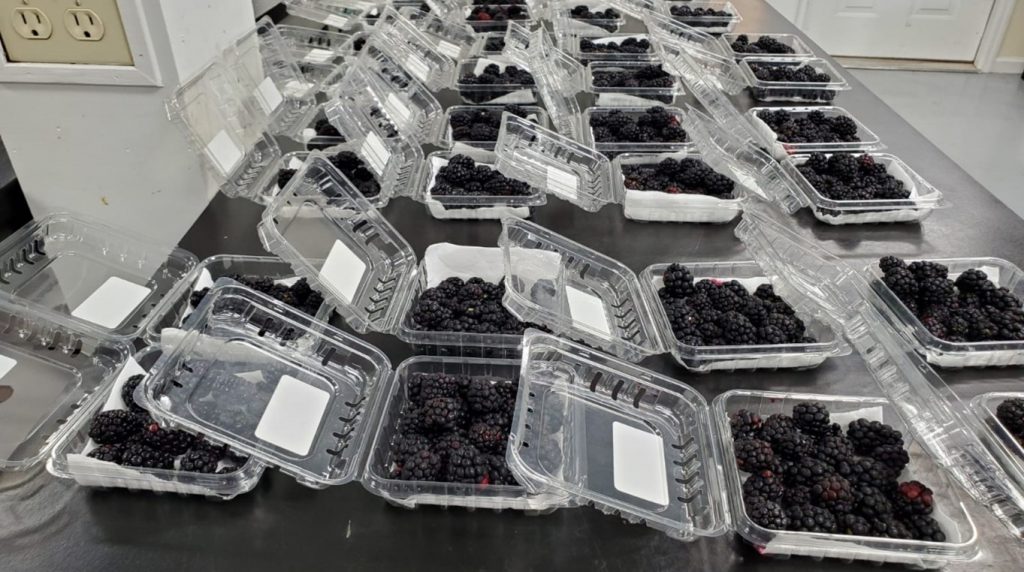
Fig 1: Chitosan treated fruit after 21 days of cold storage cultivar (Osage) Credit: Muneer Rehman, UF/IFAS
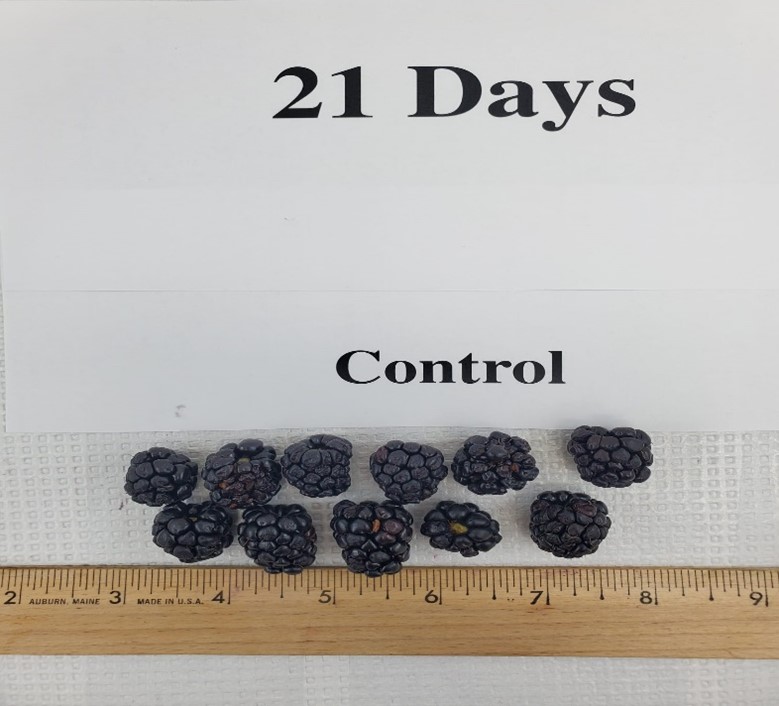
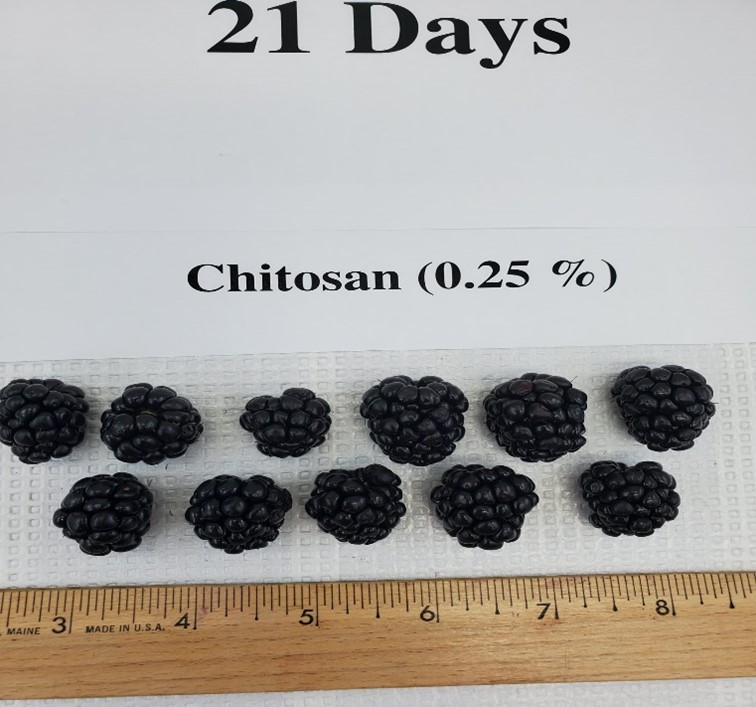
Chitosan emulsion as pre-harvest spray application significantly reduced fruit weight loss (%) in blackberry fruit stored at 1◦C for 7, 14 and 21 days. Fruit weight loss during cold storage is a critical factor in deciding the blackberry quality. Furthermore, weight loss (%) has correlation with fruit firmness, leakage, red drupelet reversion and marketing index.
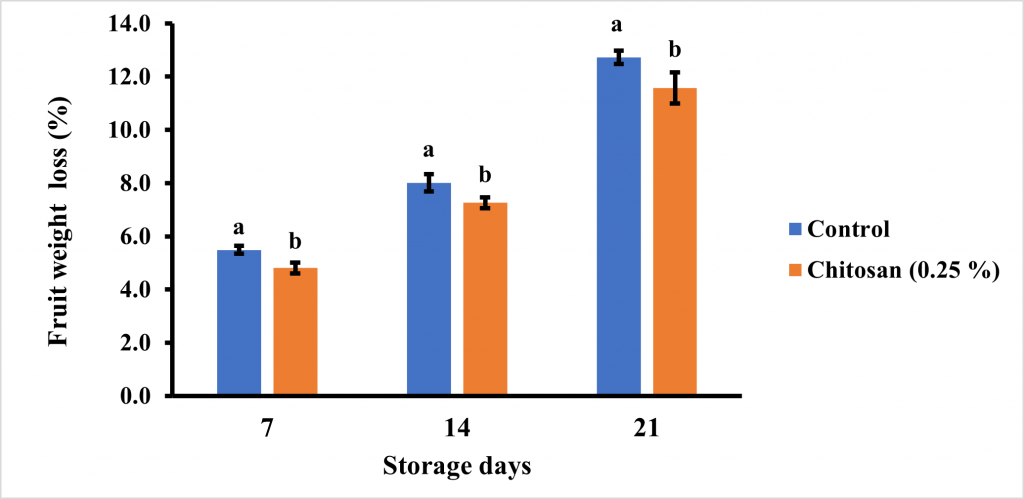
Fig 3: Pre-harvest spray application of chitosan emulsion reduced fruit weight loss (%) during the fruit stored at 1◦C for 7, 14 and 21-days Credit: Muneer Rehman, UF/IFAS
Blackberries stored in cold storage showed signs of mycelium growth if conditions were favorable for fungal development. The most common contaminants during the postharvest handling and storage of blackberry fruit are fungi and molds. Direct application of chitosan on the fruit surface reduced the mycelium growth.
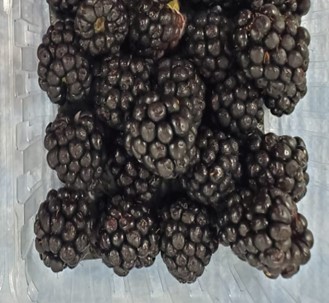
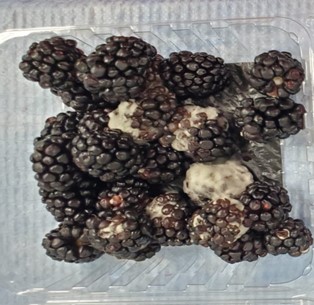
(B)
Fig 4: Chitosan treated fruit (A, top photo) with no or little sign of mold, while (B, bottom photo) is control.
Credit: Muneer Rehman, UF/IFAS
Research trials on the effect of different concentrations of chitosan emulsion alone and in combination with growth bio-stimulants as pre-harvest and postharvest are ongoing at Fruit Physiology Lab, North Florida Research and Education Center, Quincy.
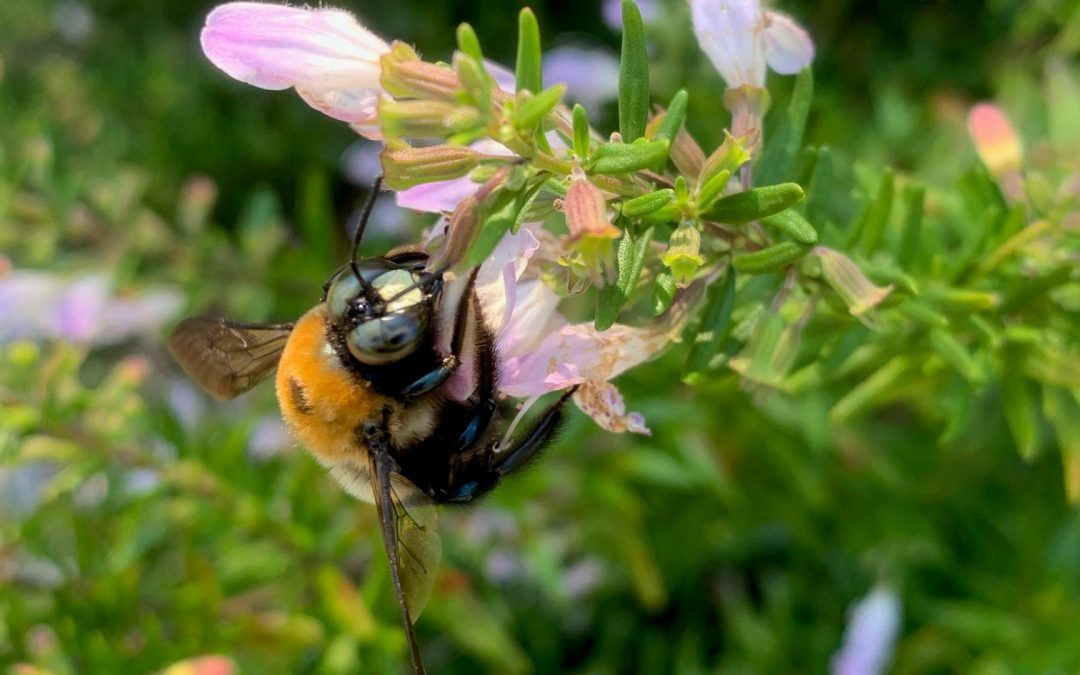
Plant names in today’s industry are not as simple as the established binomial (genus and specific) and a common name. Many of the plants that you get for your landscape are varieties, cultivars, and hybrids. To make matters more complicated, there are trade names that are given to plants to aid in marketing. We see the Endless Summer® hydrangea or Purple Pixie® Loropetalum. Throw into the mix the work of plant taxonomists who are always reclassifying plants and we can all be truly confused about a plant’s name.
Even as names change, it is still fun to learn plant names. Just recently, I sent plant pictures to the UF Herbarium to help get a clarification on the plant I was calling Georgia savory, Clinopodium sp. This is one of my favorite plants because it makes a spreading groundcover that grows about 1.5 feet tall and has tubular flowers in spring and fall. Many pollinators visit the flowers. It also grows well in sandy, well drained soil and thrives on occasional water. I have a single plant in my backyard that only gets water from rain and has grown to five feet wide over several years. It is definitely a low maintenance beauty.
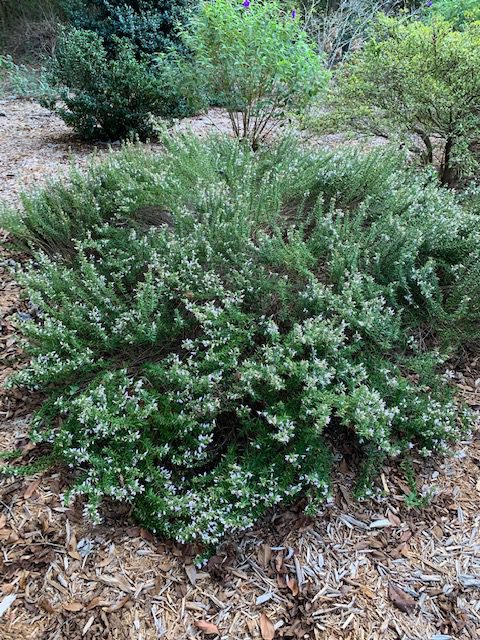
My results back from the UF Herbarium did not completely clear up this plant’s name. There are reports that it is a hybrid of Clinopodium georgianum × Clinopodium ashei ‘Desi Arnaz’. Other information suggests that it is an intergeneric hybrid between Clinopodium and Conradina named x Clinadina ‘Desi Arnaz’.
The lesson from all this confusion is to just do your best. Realize that all of us can be mistaken on a plant’s name and even those that study plants in depth don’t always agree on a name. In the world of plant names, change can happen.
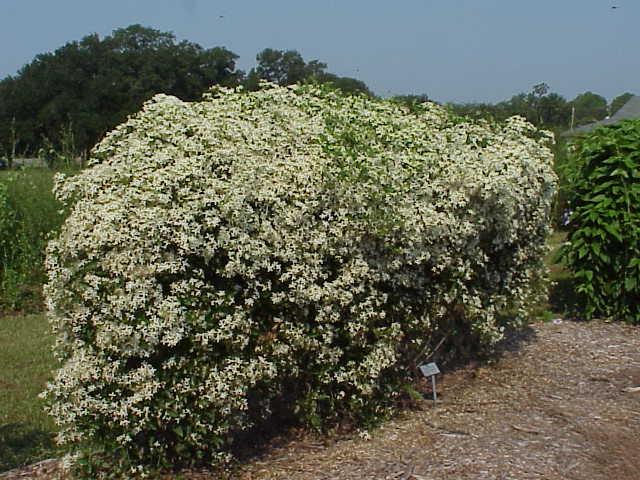
Although a beautiful flowering vine in the late summer and early fall, the non native Autumn clematis can take over an area and escape to natural areas. Learn how to distinguish this plant from the native clematis.